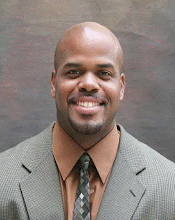Have you ever watched the progression of a winning team through a season? If so, you probably noticed that they improved at peak times, not only in skill on the court but in physical aspects as well. When this type of development occurs across the board, it does not occur haphazardly. This takes place by breaking down training schedules into periods in which the emphasis is placed on one or two performance areas. This process is called periodization and is the most effective way to plan strength training programs.
Each of these periods, or “blocks”, has its own objectives and training parameters that should be accomplished in an annual plan and that should improve motor abilities such as endurance, speed, and strength.
Four Training Periods of Basketball
Pre-Season (August – October)This period usually lasts for two to four weeks and is the time to introduce the in-season weight training program. It is a physically challenging period, not only because of the weight, but due to its combination with the occasional two daily practices in preparation for the upcoming season.
In-Season (November – March)The training in this period should maintain the improvements developed in the off-season. Optimal performance, or peaking, should occur during this period. Conditioning is not a major part of this phase unless an athlete is not getting playing time. However, a quality weight training program should be implemented.
Post Season (March – April)In the post season, athletes take about two to four weeks of active rest to recover from a long season. In high school and college basketball this period should begin some time in March.
Off-Season (May – July)In the off-season, a quality training program should develop athletes into better players. Skill development, weight training, agility drills, conditioning, stretching, plyometrics, and medicine ball work is key in order to begin the road to peaking for the start of the competitive season and the most important parts of the year.
The annual plan is split into three key areas:
· the preparatory phase
· the competitive phase
· the transition phase
Each phase is pretty much self-explanatory. The preparatory phase prepares an athlete for the competitive phase. After the competitive phase the athlete needs the transition phase to recuperate.
When creating an annual plan, a coach must consider how and when he wants his athletes to peak. A team can have up to three peaks (mono, bi, and tri) in an annual plan. The number of peaks a team should have for competitive purposes is determined by athletic playing levels. For example, junior level athletes should train on a mono-cycle so that they can concentrate on building skill in a long preparatory phase.
After the year is planned or periodized, the development of sport specific strength must be developed. Those two combined promotes long term training improvements and the avoidance of over training.
Tuesday, July 01, 2008
Subscribe to:
Posts (Atom)



